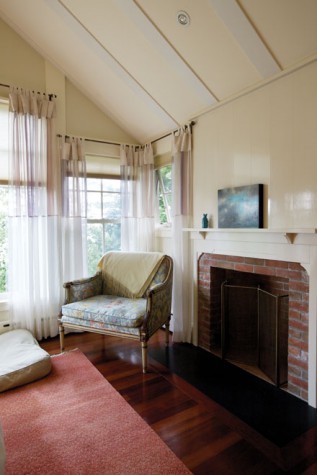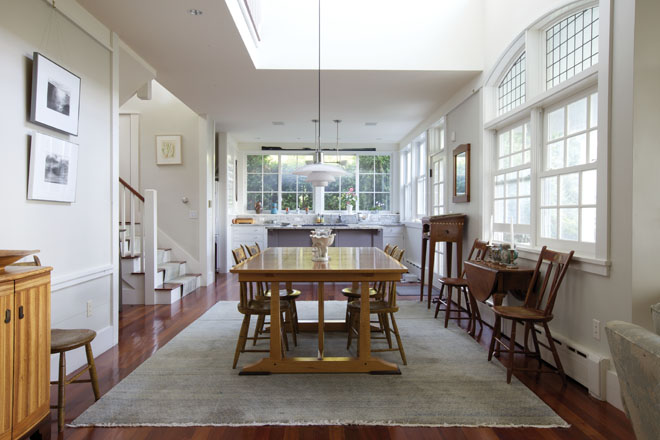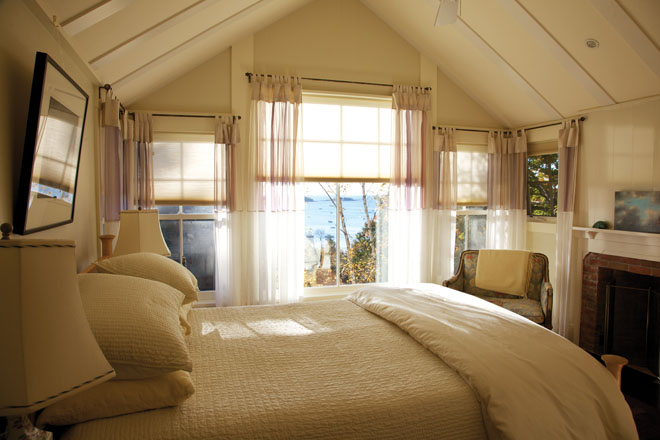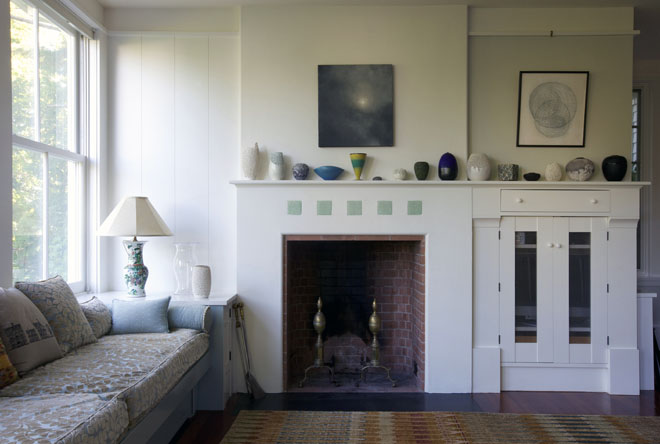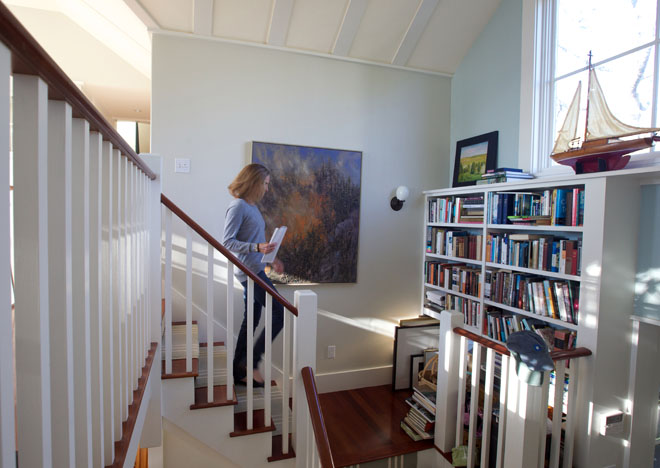The View in Our Lighthouse
FEATURE
How art illuminates a place.
When we moved into the house we built on a hill overlooking a harbor on Penobscot Bay, our daughter, who was then 12, named it “Lighthouse.” The house, she explained, has a squat tower you can see from the water, where she spent her summer days sailing. And it is filled with light.
The house faces south and has a lot of windows. We were lucky to find a quarter of an acre of land halfway between our mothers’ houses—my mother lives a couple of hundred yards in one direction, my husband’s mother a couple of hundred yards in the other. Our porch overlooks the town and the harbor full of boats in the summer, the swirls of Arctic sea smoke in the winter. On a clear day you can see Matinicus hovering at the horizon like a mirage. My husband and I met in this town. I’ve spent summers—and longer and longer—near here for most of my life.
We wanted the house to seem as if it’s always been here, like us, so in its design we deferred to context. In the mid-nineteenth century a prosperous sea captain built substantial and elegant houses for himself and 6 of his 10 children on this hill, and all but one of them are still standing. Moreover, Hans Heistad, an important landscape architect who worked with the Olmsted brothers in the 1920s and 1930s, lived across the street from us (in one of those houses) and planted trees and shrubs and flowers on what was at that time bare ledge.
Our architect, Don Knerr, designed the exterior to reflect the Victorian vocabulary of the surrounding houses—intricate trim and an abstract ship’s-wheel detail that echoes one carved over my mother’s porch. Asymmetrically placed oversized windows convey newness and hint at the open interior. We sacrificed floor space for neighborliness and proportion—I’ve never been one to choose function over form—after Jay Fischer of Cold Mountain Builders in Belfast advised us to make the house smaller and set it lower into the hill.
Patrick Chassé, an eminent authority on historical landscapes, “waved his arms” (one of his technical terms) as Kevin O’Donnell of Sunset Knoll Landscaping in Nobleboro maneuvered boulders and placed trees to give the hillside a sense of intentional wildness. Chassé also put in a tiny dooryard garden that blooms all season, from columbine in the early spring to Japanese anemones until the first frost. It serves as an extra summertime room.
With the precision of shipwrights, the Cold Mountain crew anchored the complicated angles of the roof to the central tower. Knerr organized the house as tightly as a boat to fit all our requirements—including a closet for the cat’s litter box, whose door he marked with a crescent moon—into 2,300 square feet. The interior designer Andra Birkerts devised a program of paint colors—there must be about 15 in all: grays, whites, creams, yellow, and blues in subdued hues and degrees of gloss and matte—that define the living areas and play up the textures of paneling and plaster.
When we furnished the house, we also mixed old pieces with contemporary ones. We have a pair of comfortable armchairs from my mother-in-law and a delicate French loveseat from my mother, which I keep in the bedroom so nobody will sit on it. For years we have collected studio furniture that mixes traditional function with new forms, and we have work by artists we know well: Dale Broholm, Jenna Goldberg, Steve Whittesley, and Gerald Curry. Tim Van Campen, whose studio is in Thomaston, designed all the rugs.
We know many of the artists whose work fills our living room too. Pretty much everything we chose is black (or close to black) and white or one or the other: the pierced porcelain objects by Simon van der Ven and Jacques Vesery’s turned wooden vessels on the mantel, a pair of nineteenth-century blanc de chine bowls my mother found, probably brought to Maine by some sea captain. On our walls we’ve mostly hung landscapes, and they were mostly made within a 50-mile radius. We’ve stayed close to home.
In those images, the sun shines through fog, moonlight streaks a road, pale bunchberry leaves cast shadows, the tide breaks coastal ice into blocks, a white crack of lightning opens in the night sky. We have photographs by Rudy Burckhardt, Jed Devine, Scott Peterman, and Margaret P. Watson; paintings by Dozier Bell, Dennis Pinette, Sam Cady, Gail Boyajian, and John Walker; and prints and drawings by Lois Dodd and Emily Nelligan.
These artists work in Maine, drawn, as we are, to the oblique light. It is always changing, and it reminds us of the passage of time. It is at once familiar and surprising; clouds blow out to sea and the sky fires orange. This northern light is more about contrast—all that black and white—than about color. In this house, we’ve brought the outside in.
I use the little tower room for an office. Ten years ago, I could look up from work to watch my daughter sail her dinghy way out into forbidden waters beyond the harbor. When she became an instructor I watched her gun the Whaler to corral kids who were going where she used to go. Some day I’m sure I’ll see her own children turtle their dinghies as they learn to tack in the tricky west wind. In the meantime, I watch the morning sun turn the water to steel in the mornings and the sunset turn the real lighthouse at the mouth of the harbor gold. This house, full of light, has held our happiness. It has worked out well; it has rooted us here.

